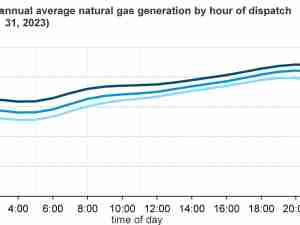A backlog of cargoes of Russia’s Sokol crude that built up off Singapore and South Korea is slowly clearing, with Russia seeking out new buyers for a grade previously favored by Indian refiners.
At its height, the stranded oil amounted to as much as 18 million barrels after Indian refiners shunned the grade following a tightening of sanctions enforcement by the US. Much of the oil was en route to Indian ports when the tankers turned around in mid-December, eventually finding their way to Strait of Malacca and the waters off Yeosu, South Korea, where they were held without any takers.
Now, China has emerged as a rising importer of the grade with private refiners — also known as teapots — set to take several shipments for February and March arrival, traders said. On Monday, the volume of stranded oil had fallen to about 10 million barrels with almost half of it now idling off China’s shores awaiting more buying interest.
Chinese refiners are comparing Sokol against another Russian grade known as ESPO, where it’s the dominant buyer, as both varieties yield a lot of diesel when processed. Offers for prompt Sokol supplies were being floated at a small discount to Brent crude on a delivered basis, a level that’s seen as competitive against grades from Abu Dhabi and Saudi Arabia.
At least seven tankers that had been holding about 5.6 million barrels of crude for several weeks began to head toward Chinese ports last month. But only one of them has unloaded so far.
The rest remain at sea, mostly off Shandong province where the bulk of China’s independent refineries are located. Separately, some recent Sokol shipments from the Russian export terminal at De Kastri are headed directly to Chinese ports.
Still, traders said there’s hesitance from Chinese entities — from ports to banks — when it comes to any vessels caught up in last round of US sanctions. At least five of the tankers holding Sokol are named on the latest list, snarling cargo discharges.
Sokol Destinations
Of the Sokol-hauling tankers that turned away from India in mid-December, a few have now returned to the country’s ports. The first discharge of a previously stranded cargo was at the port of Vadinar, which serves Nayara’s Jamnagar refinery, on Feb. 6. Nayara itself is 49% owned by Russian oil champion Rosneft PJSC.
Since then, three more cargoes have been delivered to Indian ports, with another tanker waiting to discharge at the port of Sikka, the tracking data show.
But the Sokol trade to India, whose refiners previously took almost all of the eight to nine cargoes shipped each month, is proving difficult to restore. That’s left Russia needing alternative buyers.
A first cargo of Sokol was offloaded over the weekend in Pakistan at the Byco Petroleum Pakistan Ltd. refinery, west of Karachi.
Sokol crude is loaded onto a fleet of seven specialized shuttle tankers and typically transferred to other vessels off the coast of South Korea, near the port of Yeosu.
At one point last month, all of the shuttle tankers were full, forcing a 10-day break in shipments. The situation eased after the vessels diverted to China to discharge. Subsequent shipments are heading in the same direction.
Another 5 million barrels are still being held on three very large crude carriers and one Aframax tanker. Two of the VLCCs are anchored off South Korea, while the third is heading towards Singapore, where it will join the smaller vessel.









